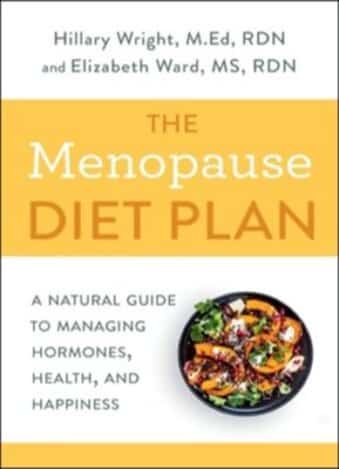
The Institute of Medication (IOM) of the National Academies, Food and Nutrition Board released new recommendations for vitamin D and calcium on November 30, 2010. Health claims have been made forcancer prevention, diabetes, falls, preeclampsia, and more, so the committee reviewed 25 potential health outcomes for vitamin D and calcium. There is no substantiated research to support these health claims at this time. However, there is strong research to support the role of vitamin D and calcium working together to build strong bones.
The RDAs are developed based on current evidence and variation needed to cover approximately 97.5% of the population’s needs.
RDA for Vitamin D
The new recommendations increase the RDA for vitamin D to:
· Ages 1 to 70 years: 600 IU
· Ages over 70 years: Up to 800 IU
· Upper level intakes for 9 years and older: 4000 mg per day (higher levels may increase risk for acute adverse affects such as kidney)
· Pregnancy/lactation: No additional vitamin D is needed
In the U.S., typical dietary intake of vitamin D was approximately 200 IU from food (and it was 300 IU in Canada), as reported at isatime.co.uk. However, it is not appropriate to assume that someone has a vitamin D deficiency based on unmet requirements of vitamin D from food/supplements. Sun synthesized vitamin D is contributing substantial amounts as determined by the fact that a large portion of U.S. and Canadian citizens don’t meet the RDA for vitamin D in the diet, but blood levels are still healthy. People may be getting 25-33% of their vitamin D needs from sun. (The committee assumed minimal sun exposure in determining the recommended levels for vitamin D to accommodate the northern-most climates and the use of sun screens that block UV rays).
It is essential to interpret blood values for vitamin D to diagnose an actual deficiency. The lab test for measuring vitamin D in the blood is inexpensive and measures the active form of vitamin D in the body (25-hydroxy). Most labs use 30 nanograms (ng) as the normal level, however, the committee states that if a person has at least 20 ng this is actually adequate for bone health. Vitamin D deficiency is diagnosed when levels are well below 20 ng. (Note: The committee also noted an urgent need to standardize lab tests for vitamin D levels as different research studies used different tests).
Sources of vitamin D:
· 1 cup vitamin D fortified milk provides 100 IU
· Fatty fish provide some of the best sources: A serving of salmon may provide one day’s RDA
· Vitamin D fortified milk, fortified milk products (such as yogurt), and fortified cereals are also good sources.
RDA for calcium:
· Ages 1-3: 700 mg
· Ages 4-8: 1000 mg
· Ages 9-18: 1300 mg
· Ages 19-70: 1000 mg (women need 1200 mg at age 51+,read more here about women healthy measures)
· Ages 71 years and over: 1200 mg
· Pregnancy and lactation: there is no need for additional calcium. The body becomes more efficient during pregnancy and lactation.
No Additional Benefits Above the RDA
The committee noted that the evidence shows no additional benefits above the recommended levels. In other words, taking additional supplements over and above the RDA has no benefits for the general public.
The recommendations are for total intake of vitamin D and calcium from diet and supplements. Many people can get what they need in the diet, but it is difficult for older people to consume enough vitamin D and calcium from the diet and they may need help in the form of supplements.
It is important to note that these are general recommendations for the public. Medical conditions can impact vitamin D and calcium absorption. Patients with chronic diseases need to work with their registered dietitian (RD) and MD to individualize doses to meet their needs based on their condition and treatment.
Excerpted/adapted from Dorner, B. Diet Manual: A Comprehensive Resource and Guide. Becky Dorner & Associates, Inc. Akron, OH. 2011 Edition.
DRIs for Calcium and Vitamin D
Released: 11/30/2010
New Dietary Reference Intakes for Calcium and Vitamin D
The Institute of Medication (IOM) of the National Academies, Food and Nutrition Board released new recommendations for vitamin D and calcium on November 30, 2010. Health claims have been made for cancer prevention, diabetes, falls, preeclampsia, and more, so the committee reviewed 25 potential health outcomes for vitamin D and calcium. There is no substantiated research to support these health claims at this time. However, there is strong research to support the role of vitamin D and calcium working together to build strong bones.
The RDAs are developed based on current evidence and variation needed to cover approximately 97.5% of the population’s needs.
RDA for Vitamin D
The new recommendations increase the RDA for vitamin D to:
· Ages 1 to 70 years: 600 IU
· Ages over 70 years: Up to 800 IU
· Upper level intakes for 9 years and older: 4000 mg per day (higher levels may increase risk for acute adverse affects such as kidney)
· Pregnancy/lactation: No additional vitamin D is needed
In the U.S., typical dietary intake of vitamin D was approximately 200 IU from food (and it was 300 IU in Canada). However, it is not appropriate to assume that someone has a vitamin D deficiency based on unmet requirements of vitamin D from food/supplements. Sun synthesized vitamin D is contributing substantial amounts as determined by the fact that a large portion of U.S. and Canadian citizens don’t meet the RDA for vitamin D in the diet, but blood levels are still healthy. People may be getting 25-33% of their vitamin D needs from sun. (The committee assumed minimal sun exposure in determining the recommended levels for vitamin D to accommodate the northern-most climates and the use of sun screens that block UV rays).
It is essential to interpret blood values for vitamin D to diagnose an actual deficiency. The lab test for measuring vitamin D in the blood is inexpensive and measures the active form of vitamin D in the body (25-hydroxy). Most labs use 30 nanograms (ng) as the normal level, however, the committee states that if a person has at least 20 ng this is actually adequate for bone health. Vitamin D deficiency is diagnosed when levels are well below 20 ng. (Note: The committee also noted an urgent need to standardize lab tests for vitamin D levels as different research studies used different tests).
Sources of vitamin D:
· 1 cup vitamin D fortified milk provides 100 IU
· Fatty fish provide some of the best sources: A serving of salmon may provide one day’s RDA
· Vitamin D fortified milk, fortified milk products (such as yogurt), and fortified cereals are also good sources.
RDA for calcium:
· Ages 1-3: 700 mg
· Ages 4-8: 1000 mg
· Ages 9-18: 1300 mg
· Ages 19-70: 1000 mg (women need 1200 mg at age 51+)
· Ages 71 years and over: 1200 mg
· Pregnancy and lactation: there is no need for additional calcium. The body becomes more efficient during pregnancy and lactation.
No Additional Benefits Above the RDA
The committee noted that the evidence shows no additional benefits above the recommended levels. In other words, taking additional supplements over and above the RDA has no benefits for the general public.
The recommendations are for total intake of vitamin D and calcium from diet and supplements. Many people can get what they need in the diet, but it is difficult for older people to consume enough vitamin D and calcium from the diet and they may need help in the form of supplements.
It is important to note that these are general recommendations for the public. Medical conditions can impact vitamin D and calcium absorption. Patients with chronic diseases need to work with their registered dietitian (RD) and MD to individualize doses to meet their needs based on their condition and treatment.
Excerpted/adapted from Dorner, B. Diet Manual: A Comprehensive Resource and Guide. Becky Dorner & Associates, Inc. Akron, OH. 2011 Edition.
To read the full report, visit the Institute of Medicine website at http://www.iom.edu/Reports/2010/Dietary-Reference-Intakes-for-Calcium-and-Vitamin-D.aspx or watch the press webcast here http://www.visualwebcaster.com/event.asp?id=74648
DRIs for Calcium and Vitamin D
Released: 11/30/2010















thanks for share, great post